Introduction: Why Gagné’s Principles Matter in Corporate Training 🌍
Imagine walking into a classroom where a training session seems to flow like a well-crafted story. 📖 Each concept connects to the next, keeping everyone engaged and leading to powerful, transformative learning. Having a clear beginning, middle, and end that takes learners on a journey 🚀 can be a powerful tool. Robert Gagné, a renowned educational psychologist, understood how essential it is for instruction to feel intentional and structured. In the corporate world 🌐, where efficiency and impact are critical, Gagné’s framework provides a practical, research-based way to deliver training that sticks.
In this post, we’ll explore Robert Gagné’s five types of learning and nine events of instruction and how these concepts can be applied to modern corporate training. 🧑💼 With the right approach, corporate trainers can create memorable and transformative learning experiences, maximizing the investment of time and resources. 💼⏰
A Brief History of Robert Gagné and His Learning Theory 📜
Robert Gagné’s theories were groundbreaking in the 1960s when behaviorist views of learning were dominant (the idea that behavior is learned through interactions with the environment and shaped and reinforced by consequences). 🧠 Gagné took inspiration from cognitive psychology (the idea that behavior can be understood by focusing on internal mental processing like perception, memory, problem-solving, and decision-making), focusing on the mental processes that happen when people learn. He believed that learning is a series of stages that could be structured to achieve desired outcomes, which is essential for developing skill-based and knowledge-based training. 🎓
Gagné is best known for his Nine Events of Instruction, a sequence that guides learners through the process of acquiring, understanding, and retaining new information. His framework is still relevant in today’s corporate training landscape because it combines methodology with a practical approach that trainers can apply to improve engagement and effectiveness in their classes and courses. 📈🎉
Gagné’s Five Types of Learning – Breaking Down the Categories🔍
Gagné identified five types of learning. Each type requires different instructional methods. Understanding these types helps corporate trainers target the right approach based on the desired outcomes. 🧩✨
Intellectual Skills 🧠📊
Intellectual skills are the ability to process information so it is understood, which leads to the ability to leverage knowledge to solve problems or analyze data. 📊 Intellectual skills are a bit like the engine in a car 🚗—they drive the “how” of learning and allow people to move from understanding a concept to being able to apply it. You may remember the “apply” stage in Bloom’s Taxonomy.
A real-life scenario that comes to mind is a data analysis course 📉 where trainees need to develop intellectual skills to interpret and manipulate data sets. Gagné’s framework would guide trainers to break down complex analyses into step-by-step instructions, enabling learners to apply what they have learned. ✅
Cognitive Strategies🧩💡
These are internal processes that guide learners on how to organize and manage their learning. 🗂️ They involve skills such as organizing information, using memory aids, and problem-solving. These are “tools” that are often taught today by psychologists and other practitioners to help equip people with the skills they need to change behavior. Mindfulness and awareness techniques are among the most common these days, but memory and mnemonic strategies, organizational and planning skills, and problem-solving skills are other examples.
A real-life scenario where you might use this is in a project management course 🗂️; trainers can teach techniques like mind mapping or prioritization, which help learners structure their thinking and organize tasks. 📝
Verbal Information 📚💬
Verbal information refers to the recall and recognition of facts and information. This is like having a library of knowledge in your mind 📖 that you can access when needed. It may remind you of memorizing multiplication tables or poems to recite in class as an elementary school student. If so, you’re spot on.
This is useful for things like compliance training 🔐, where key policies must be remembered to ensure procedures are followed. Trainers should use repetition and examples to make this information stick. 🛠️
Motor Skills 🏃♂️🤹♀️
Motor skills involve the physical manipulation of objects or actions, like typing or machine operation. Motor skills are like muscle memory💪. Think of learning to ride a bike. At first, it’s a bit wobbly, and trepidation ensues during the learning process, but before you know it, the training wheels are off🚲, and you’re zooming all around town!
This approach is commonly used in fast food 🍔 training, where trainers break down preparation, cooking, and serving practices into simple, repetitive steps to build motor skills in trainees. 🔄
Attitudes💬💫
Attitudes reflect learners’ feelings and motivations, influencing their behavior over time. There is also an entire corner of psychology dedicated to learning and motivation. You might think of managing attitudes like tending a garden🌱. Just as gardens need sunlight ☀️ and water 💧, positive attitudes need nurturing to grow and develop.
In the corporate classroom, developing a positive attitude toward serving clients is crucial for customer service representatives 💼. Trainers can use role-playing to model and reinforce customer-centric behaviors, fostering a strong customer-oriented attitude. 📈🌟
The Nine Events of Instruction – Gagné’s Roadmap to Effective Training 🎓
Gagné’s Nine Events of Instruction provide step-by-step guidelines for effective training, ensuring learners are engaged, informed, and able to retain and apply their knowledge 🧠.
-
Gain Attention👀
Capturing the learner’s attention is crucial and not always easy. With competing priorities, attention spans dwindling 📉, and constant distraction at our fingertips 📱, gaining attention in training has never been harder. Without it, however, learners won’t be open to receiving new information. Gaining attention is a bit like a movie trailer 🎬 for your session, which incidentally is a great but underused best practice 🎥, an engaging preview that hooks the audience at the start or even before they enter the room 🚪.
While gaining attention is difficult, it isn’t impossible. You may try using recorded training 📹 from a pilot session along with a few graphics and some exciting background music 🎶 to create a theatrical-style training trailer that can be shared as part of your communications strategy for a leadership session, for instance. You could also start with a compelling story 📖 or an eye-catching statistic to grab attention in training on workplace safety.
-
Inform Learners of the Objectives 🎯
Learners need to know what they will gain from the session. This event is also reinforced by Malcolm Knowle’s adult learning theory. Andragogy suggests that adults (versus children, pedagogy) need an explanation as to what will be taught and why it is important 🤔. Setting expectations and informing learners of objectives is like having a blueprint 📐 for construction 🏗️. Without one, you run a major risk of not ending with the intended result.
This event can be achieved by simply paraphrasing the learning objectives that were, hopefully, documented during the needs analysis stage of creating the training. You can place this information on a slide 📊 and tie it back to departmental or company goals to get the full effect 📈.
-
Stimulate Recall of Prior Learning 🔄
Stimulating recall prior to learning is the act of connecting new information with what learners already know 🤓. Let’s be honest; everybody loves a little bit of a head start when they can get it. That is exactly what you, as a trainer, are providing when you stimulate recall prior to learning. It not only helps to prime the content that you will be teaching, but it also works to reduce stress or anxiety 😌 by highlighting the fact that learners aren’t about to jump directly into the deep unknown but rather build upon things that they already have some knowledge of 📚.
There are several ways to do this. One great way is by assigning pre-work for participants to engage with prior to even joining the session 💻. This could be a short video 📺, article 📄, or even a survey 📋 that can be emailed out a few days before the training. Another great place to inject this event throughout the training is in your transitions. Transition statements that start with phrases like “we already know” or “as we are all aware” will get you off on the right foot 👣.
-
Present the Content 📑
Of course, presenting the actual content in a meaningful and engaging way is on the list. There are equally as many methods and best practices out there to master this as there are to completely botch it 💡. At the risk of being redundant, I will direct you to my blog for over a hundred best practices to pull from in this event. While you’re there, I’d encourage you to cruise through the “Mastering Training Presence,” “Mastering Classroom Conversations,” and “Mastering Classroom Conversations” categories 📝.
- Provide Learning Guidance 🧭
Providing learning guidance is the act of sharing examples 🖼️, using story and analogy 📖, and even offering hints while delivering your content or facilitating activities in the classroom. Harvard Business Review and The Training Industry found that leveraging stories not only makes the content more engaging but can also increase recall by twenty to fifty percent 📈. It’s not a bad bump to your training results for minimal extra work.
To do this, one best practice is to walk a mile in your participant’s shoes 👞 before you deliver your content. Whether you call it a gemba walk, job shadowing, or a reverse shadow, you will encounter experiences that can be leveraged as examples or stories. Then, you simply share your experience with the class to help drive your points home 🏡. If you’re really stuck or don’t have the resources to do this, a large language model like ChatGPT or Copilot can prove useful. Using a prompt like, “write me a few analogies for topic XYZ that I can share in a corporate training” might spark some ideas.
-
Elicit Performance (Practice) 💪
We have all been to webinars that someone in our organization has titled training. Oftentimes, cameras are off, mics are muted, and there is little to no engagement from participants 😴. The eliciting of practice provides learners the opportunity to apply what they have learned in a safe environment 🛡️ so when they go out into the real world, they are better prepared and more confident 💼.
This might be a skills practice where you break participants up into groups and assign roles for them to play with pre-written scenarios 🎭. It may also be a hands-on demonstration. Whatever the case, inject practice into your sessions so you and your participants know that they are ready for the real world 🌎.
-
Provide Feedback 💬
“We all need people that will give us feedback” – Bill Gates. Immediate feedback that reinforces correct learning and corrects mistakes is imperative 🔄. Practice can only make perfect if practiced correctly, and it’s only through immediate feedback that mistakes can be addressed. Building a culture of giving and receiving feedback in your classroom will help to ensure that participants are getting the most out of their time in training with you ⏱️.
Feedback will arise in many forms in the classroom. Opportunities may arise when learners answer a question incorrectly ❌. In this case, it’s important to provide feedback immediately, not only for that participant but for the rest of the class, who might otherwise believe that the incorrect information provided by the participant is actually correct. In group activities, feedback can be provided during the debrief 📢. Leveraging the “what, so what, now what” format can be a powerful tool for providing feedback and getting participants to commit to real-world applications.
-
Assess Performance ✅
Assessing performance is the practice of testing learners to see if they can apply the knowledge independently 👩🏫. With a multitude of testing options at your disposal, it’s good to think through how you can get creative with the testing process 🎲. No one loves a scantron test, but people love games 🎮. There are many options out there, like Kahoot, that might offer good alternatives to traditional testing methods.
In your virtual session, you can leverage quick polls using the polling tool in your virtual classroom. This will give you quick, at-a-glance insight into themes that your learners may need to be re-explained 🔍. Another creative application of testing for training that relates to teaching learners how to use their internal resources would be to create an escape room-style game that requires participants to leverage their internal resources to find the keys (answers) they need to escape the simulation.
-
Enhance Retention and Transfer 🔗
Enhancing retention and transfer is the final event in Gagné’s series of learning events and focuses on solidifying learners’ grasp of new knowledge and enabling them to apply it in real-life situations 🌐. This final step ensures that learners not only remember the content but can also use it beyond the context of the training 💡.
Practical activities such as real-life case studies 📊, role-playing 🎭, or problem-solving exercises are common strategies to encourage knowledge transfer. You can increase the impact by delivering more content over time after the session is completed. Water-dropping self-guided exercises in the ensuing weeks will help keep the knowledge top-of-mind for a longer period of time and increase the likelihood that learners will move it from short-term memory to long-term memory 🧠.
Conclusion: Creating Impactful Learning Experiences🌟
As you can see, while Gagné’s theories provide corporate trainers with a structured approach to designing and delivering impactful learning experiences 📘, the journey through these experiences may not be as clear-cut. It’s far more important to incorporate all of the events in your training than it is to prescriptively follow the order in which you deliver the events to your participants 📝. The ninth event, enhance learner retention, for instance, may be sprinkled throughout the classroom portion of your onboarding program but may also appear in the following weeks and or months. The same may be true of all of the other events.
With intentional design and a commitment to following Gagné’s principles, corporate trainers can create a meaningful learning journey that empowers employees to grow, adapt, and excel 💼.




